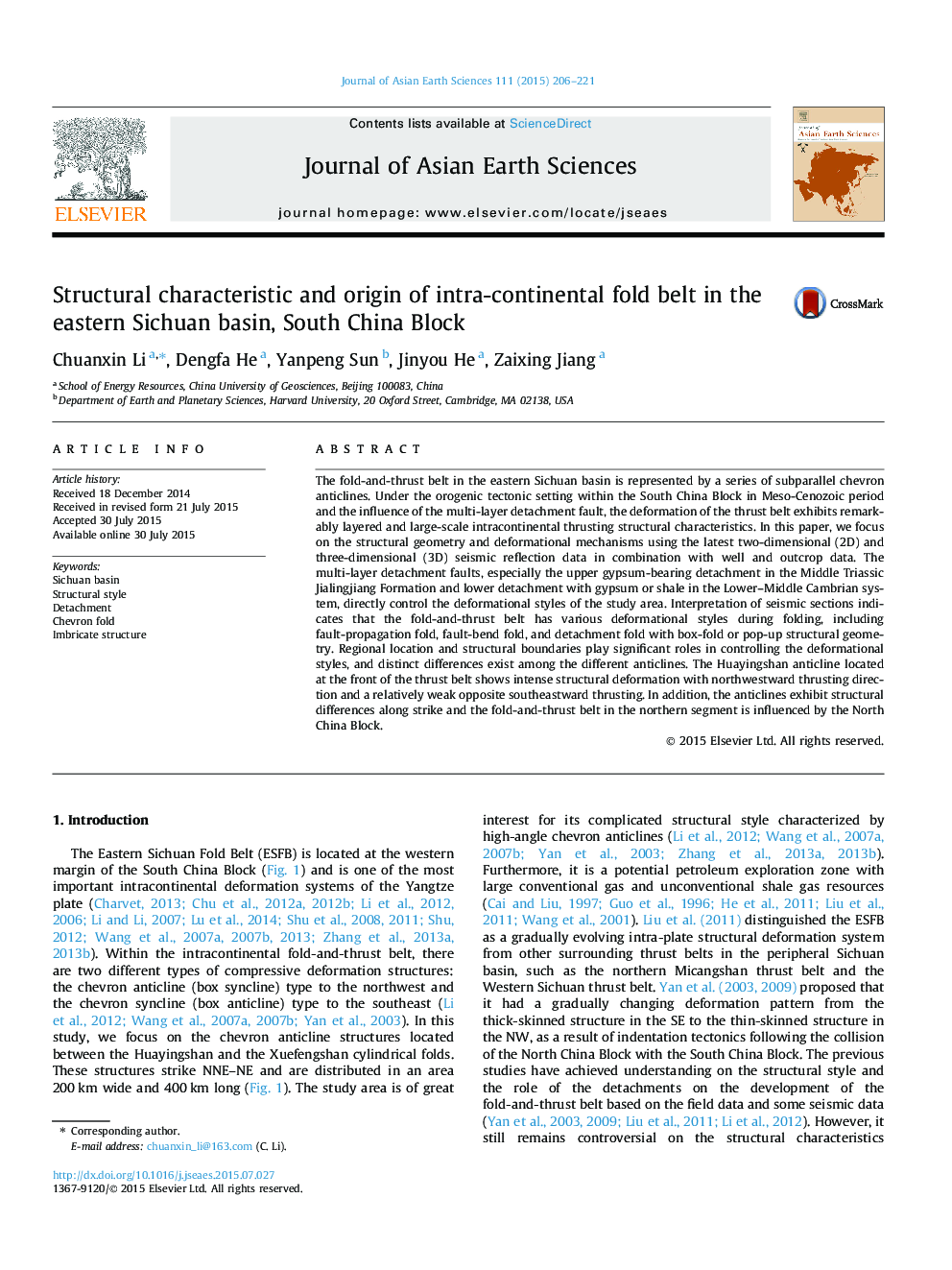| Article ID | Journal | Published Year | Pages | File Type |
|---|---|---|---|---|
| 6444139 | Journal of Asian Earth Sciences | 2015 | 16 Pages |
Abstract
The fold-and-thrust belt in the eastern Sichuan basin is represented by a series of subparallel chevron anticlines. Under the orogenic tectonic setting within the South China Block in Meso-Cenozoic period and the influence of the multi-layer detachment fault, the deformation of the thrust belt exhibits remarkably layered and large-scale intracontinental thrusting structural characteristics. In this paper, we focus on the structural geometry and deformational mechanisms using the latest two-dimensional (2D) and three-dimensional (3D) seismic reflection data in combination with well and outcrop data. The multi-layer detachment faults, especially the upper gypsum-bearing detachment in the Middle Triassic Jialingjiang Formation and lower detachment with gypsum or shale in the Lower-Middle Cambrian system, directly control the deformational styles of the study area. Interpretation of seismic sections indicates that the fold-and-thrust belt has various deformational styles during folding, including fault-propagation fold, fault-bend fold, and detachment fold with box-fold or pop-up structural geometry. Regional location and structural boundaries play significant roles in controlling the deformational styles, and distinct differences exist among the different anticlines. The Huayingshan anticline located at the front of the thrust belt shows intense structural deformation with northwestward thrusting direction and a relatively weak opposite southeastward thrusting. In addition, the anticlines exhibit structural differences along strike and the fold-and-thrust belt in the northern segment is influenced by the North China Block.
Related Topics
Physical Sciences and Engineering
Earth and Planetary Sciences
Geology
Authors
Chuanxin Li, Dengfa He, Yanpeng Sun, Jinyou He, Zaixing Jiang,
